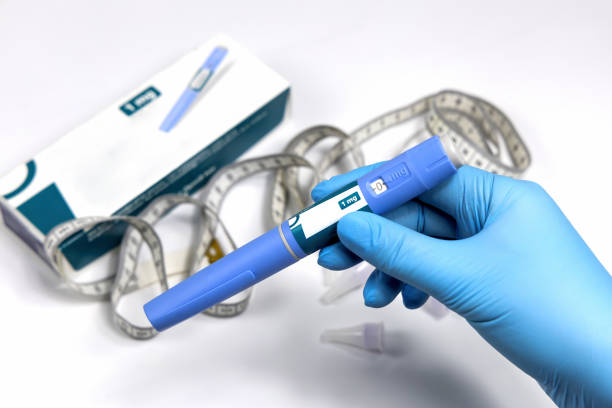GLP-1 drugs have caused quite a stir in the pharmaceutical world these days. They’re on track to potentially become some of the biggest money-makers to hit the market, ever.
Before GLP-1s, there weren’t many great options for weight loss besides bariatric surgery. But GLP-1 medications have changed the game by addressing a huge need and providing ongoing treatment, which translates to recurring revenue for the companies.

Right now, just two companies have GLP-1 treatments for weight loss approved, and they’re expected to dominate until around 2027. This means they can keep prices high—around $10,000-$16,000 per patient each year (US). However, with both companies competing, prices might see some minor decreases.
What’s in the Pipeline for GLP-1 Therapy?
A recent study showed that Wegovy doesn’t just help with weight loss – it also lowers the risk of strokes, heart attacks and heart-related deaths by 20% for people diagnosed with heart disease. Researchers are also exploring whether these drugs can help with conditions like polycystic ovary syndrome, dementia and alcohol misuse. Plus, there’s talk of more oral versions hitting the market by 2025.
However, there’s a catch for investors: the companies making these drugs are priced incredibly high—40 to 100 times their earnings. This is much higher compared to other companies in the sector. Although the long-term outlook for GLP-1s potential therapy looks promising, it’s tough to gauge their exact impact right now, especially since other companies are still in the early stages of developing similar drugs.
The Latest Developments in GLP-1 Research
At the 2024 American Diabetes Association conference in Orlando, researchers unveiled data on 27 GLP-1 drugs currently in development. Much of this data comes from animal studies or early-stage human trials, but there are also some promising mid-to-late-stage trials.

Eli Lilly, known for Zepbound and Mounjaro, is developing two more GLP-1 drugs. One of them is retatrutide an injectable drug that combines GLP-1 with glucagon and GIP. In earlier trials, retatrutide helped people lose about 24% of their body weight on average, which is about 58 pounds – more than any other weight loss drug currently available.
Another Lilly drug in development is mazdutide. The company partnered with Innovent Biologics to develop this drug in China and is now in its phase 3 study. The drug also reduced serum uric acid levels, which can cause health problems if they build up in the bloodstream.
In a phase 2 trial of people who were overweight or had obesity, Boehringer Ingelheim’s drug survodutide, which contains both GLP-1 and glucagon, led to an average weight loss of 19% after 46 weeks. Another phase 2 study in people with MASH and fibrosis showed that 83% of participants also had improvements in their liver condition. Dr. Waheed Jamal, the company’s corporate vice president, highlighted the large potential of survodutide to help people with cardiovascular, metabolic and renal conditions. Boehringer Ingelheim has already begun phase 3 trials for this drug.
Pfizer is also making strides with its once-daily formulation of danuglipron. In the second half of 2024, Pfizer plans to conduct dose optimization studies to find the best doses for this formulation. The current randomized study which involve 14,000 participants is examining the safety and pharmacokinetics of various formulations in healthy adults over 18. So far, the results support once-daily dosing and no liver enzyme elevations have been observed.
What to Expect from GLP-1 Drugs in the Near Future
GLP-1 drugs are not just revolutionizing weight loss but are also showing promise in treating cardiovascular diseases. Semaglutide for example has been found to greatly reduce heart attack and stroke rates in patients with heart disease. This breakthrough suggests that semaglutide could become a key treatment for heart disease.

The role of technology is crucial in understanding GLP-1s’ full impact. Dandelion Health has created a GLP-1 data library using AI to analyze real-world data from over 10 million patients and it’s working with major health systems worldwide to track how GLP-1s affect heart risk and other health factors.
Researchers are also doing further studies and investigations on the possible additional uses for GLP-1 drugs. As these studies continue, it’s highly possible that GLP-1 RAs could be approved for a broader range of medical conditions.